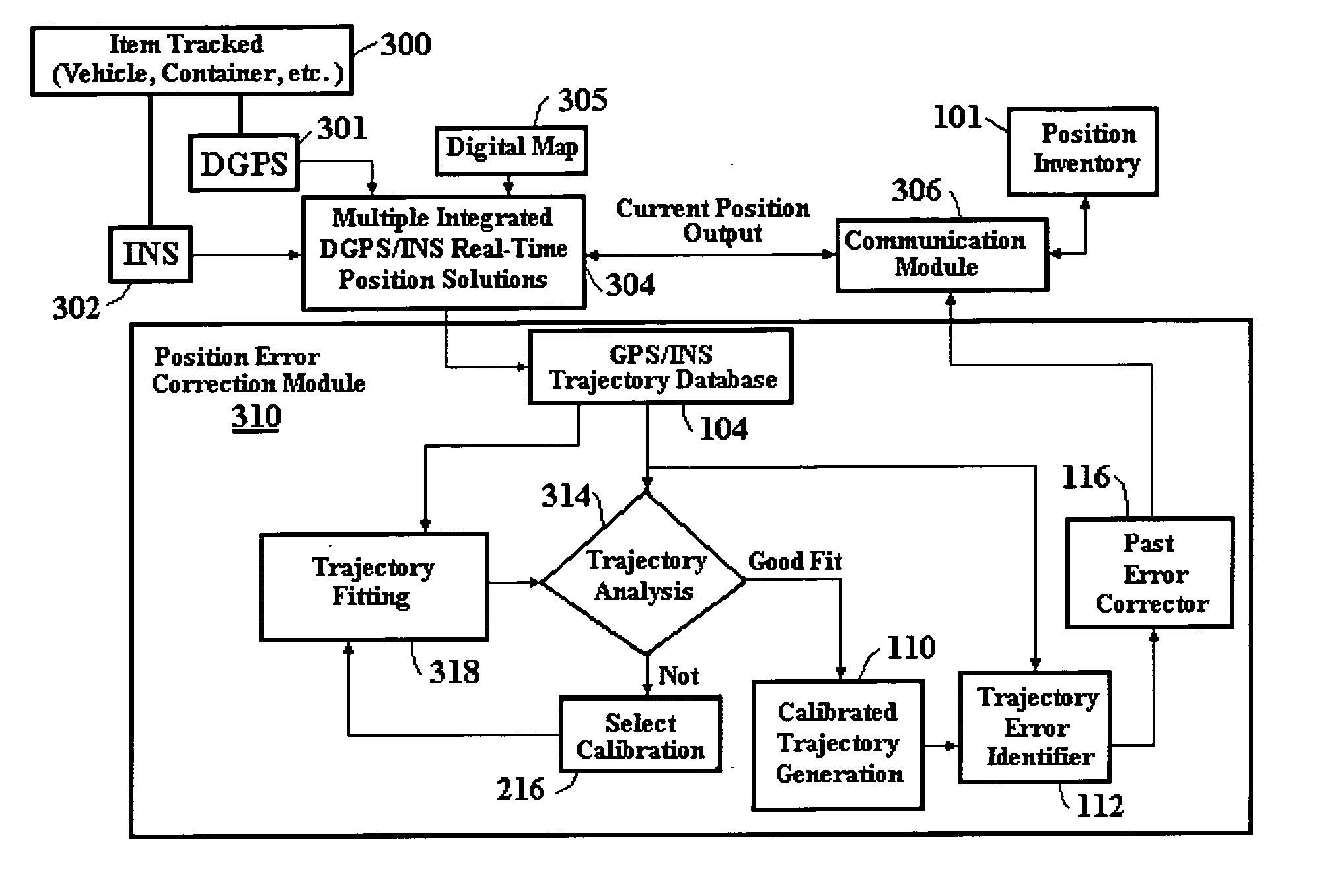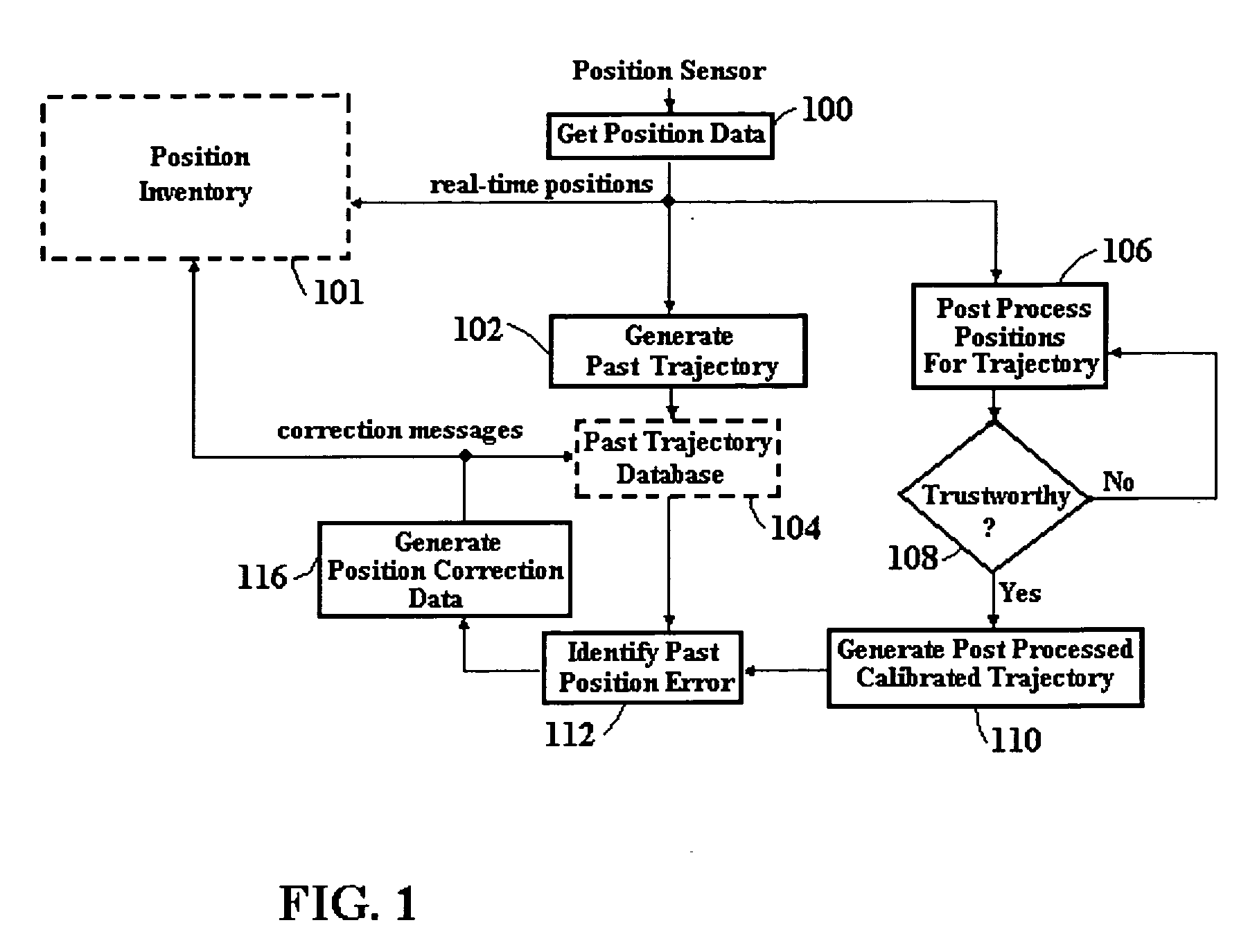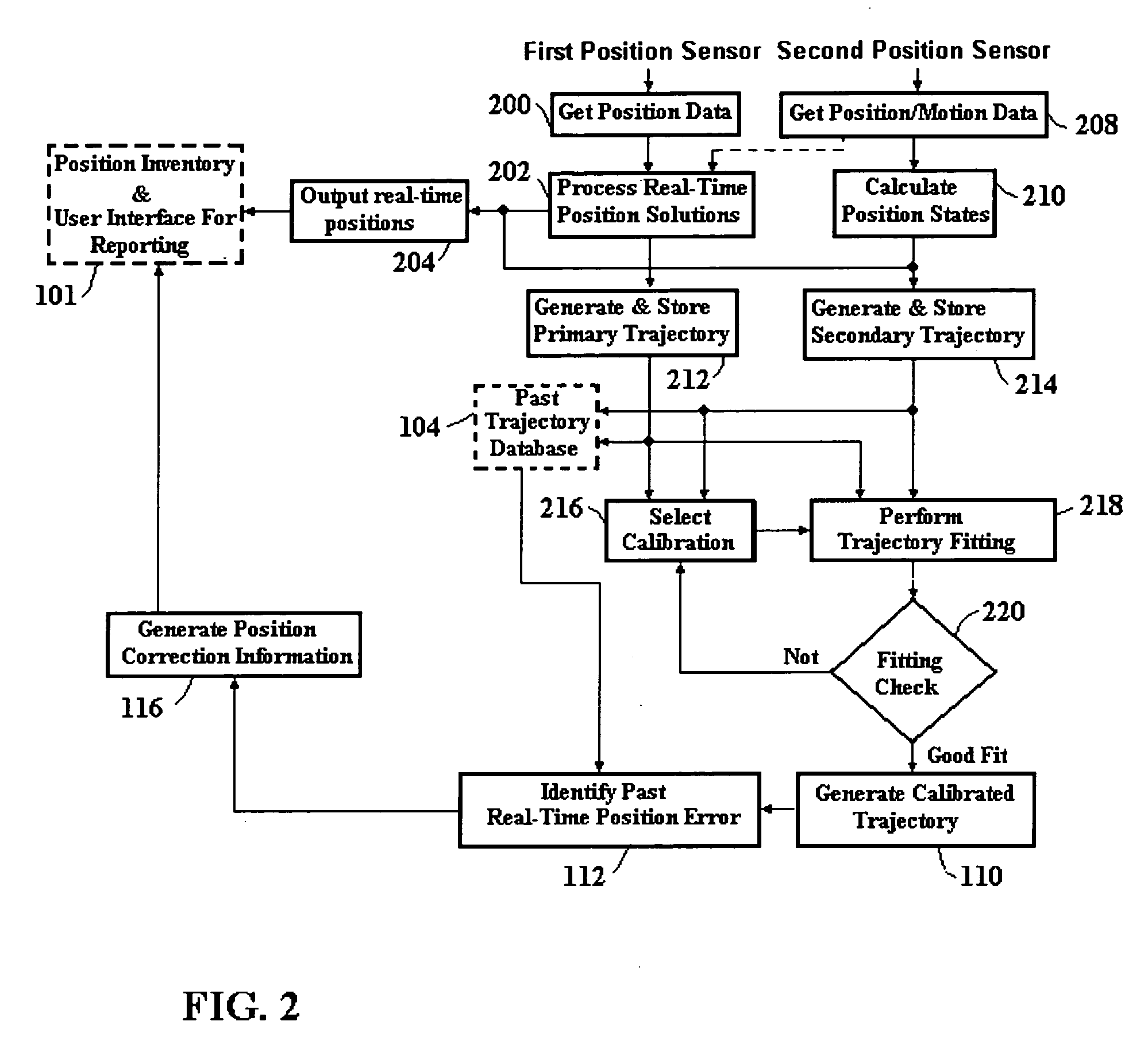Automatic past error corrections for location and inventory tracking
a technology of inventory tracking and past errors, applied in the direction of navigation instruments, instruments, electric signalling details, etc., can solve the problems of radio-wave positioning, affecting the accuracy of real-time positioning systems, and preventing them from achieving 100% reliability or accuracy. , to achieve the effect of high probability
- Summary
- Abstract
- Description
- Claims
- Application Information
AI Technical Summary
Benefits of technology
Problems solved by technology
Method used
Image
Examples
Embodiment Construction
[0026]FIG. 1 is a flowchart illustrating basic operation of a method for tracking real-time positions and correcting past trajectory of a mobile object in a real-time fashion. Initially in FIG. 1, real time data is obtained in step 100 from the position sensor. The position sensor typically includes a combination of a positioning sensor such as a GPS sensor, and a sensor indicating movement such as an INS or speed sensor. In one embodiment, the position data includes a confidence level parameter indication from the position sensor. The position data obtained is provided to an inventory 101 for storage. The real time position data is further provided to step 102 for determining past trajectories that are stored in a past trajectory database 104. Ideally, the past trajectory in step 102 includes the available position solutions that have been obtained or reported in real time. The real time position information from step 102 is also provided to steps for determining trajectory errors ...
PUM
 Login to View More
Login to View More Abstract
Description
Claims
Application Information
 Login to View More
Login to View More - R&D
- Intellectual Property
- Life Sciences
- Materials
- Tech Scout
- Unparalleled Data Quality
- Higher Quality Content
- 60% Fewer Hallucinations
Browse by: Latest US Patents, China's latest patents, Technical Efficacy Thesaurus, Application Domain, Technology Topic, Popular Technical Reports.
© 2025 PatSnap. All rights reserved.Legal|Privacy policy|Modern Slavery Act Transparency Statement|Sitemap|About US| Contact US: help@patsnap.com



